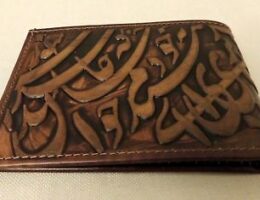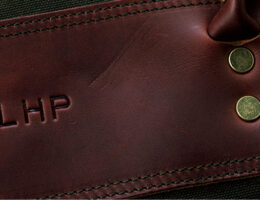IRAN ART EXHIBITION: TOOLS YOU NEED FOR LEATHERWORKING
Leather crafting, as one of mankind’s oldest skills, is one of the industries which has always been popular and even necessary in all communities. The product created through leatherwork could last for decades since the result is rugged, creative, and rewarding. Nowadays, new modern tools have caused a link between traditional skills and the latest CNC and 3D printing technologies.
This industry is going to remain a fun and exciting way to create great-looking wearables and dressing-up items.
Learning which tools to apply and how to use them, you can start making your own leather creations.
So, whether you are eager to start your own brand and apply it as a job, or simply build some skills and make your own leather goods as a hobby, we have made a list of basic tools you need to enter the world of leatherwork.
Leather
It is quite obvious that in order to do any leather crafting you’ll need leather. If you are going to make small accessories like wallets to start your new hobby, depending on the style, we recommend you to apply full-grain leather to create a strong and more durable handcraft.
Thread
From synthetic to natural, there is a variety of thread options for leather crafting. However, due to their high strength, low elongation, great sheen, and their resistance against effects of heat, light, and climate, linen threads are the most popular for leatherwork.
In order to make it easy for stitching, especially for hand-sewn leatherwork projects, linen thread is usually run through a wax pot. This can also improve the strength and durability of linen threads.
Cutting Tool
Making leather goods you need a suitable cutting tool as an essential part of your leatherwork project. Professional craftsmen use standard cutting tools such as a utility knife, a rotary cutter, or a round knife. However, regular cutters could in cases be handy and applied. Even Xacto knives and box cutters are the choices of the most leatherworkers. So, your choice in picking up a cutting tool depends on your personal preference.
Cutting Mat
In order to make precise and clean cuts, and also to protect your workbench, using a cutting mat is necessary. Most of stationary store can provide you with self-healing cutting mats.
Diamond Chisels
A diamond chisel helps you accurately stitch through leather without first creating stitch holes. Using this tool, you can punch the stitching holes through pieces of leather. Such tools, which come in a variety of sizes, can help you punch perfect holes for hand sewing as well as saddle stitching leather. If you want to make them slide in and out of the leather smoothly, you can apply a bit of beeswax to these chisels.
Leatherworking Hammer
IRAN ART EXHIBITION: In order to protect your kit against possible scratches or damages caused by punches and rivet setters, a plastic hammer could ensure clean strikes in basic leather work.
A leather hammer, mallet, or maul each deliver concentrated force to a location. However, leather mauls have a weighted head wrapped in a nylon cylinder, which makes them suitable for hitting metal tools, such as punches and stamps.
Stitching awl
A Stitching awl or Leather Awl is a hand-held tool which can be used for a variety of purposes in leather working. You can use such tool for making or piercing small holes through which you can later run thread or stitches.
Leather Stitching Needles
Applying suitable needles is inevitable to stich up your leather creation. There is a large variety of different needles each of which is suitable for a specific purpose. Of course, needles used for leather work are typically dull because the stitching holes are pre-punched. However, using the wrong type of needle is the mistake even experienced sewers could sometimes make. Wrong type and size needle can lead to needle breakage, or causing difficulty working with the chosen fabric and poor stitch quality.
So, a correct needle can bring an improvement in a sewer’s skill as well as a great enjoyment in their needlework.

Leather Skiver
In order to remove thin layers of leather material for certain parts of the production process such as folding, a leather hand skiver is the tool which comes handy. Through their sharp, usually flat or slightly curved blades, you can use skivers applying downward pressure to shave off a thin layer of leather as they are drawn.
Edge Beveler
An Edge Beveler has a cutting edge and is used for smoothing the edge of your leather. The are ergonomically curve-shaped to maximize comfort and efficiency when trimming and finishing the edges of leather to round them off.
Groover
Leather groovers are the adjustable tools which are used to cut grooves into leather, and create a straight channel where stitching holes can be punched. Grooves are usually used for marking lines if you pull it with light pressure to cut a light line into the leather. You can also use them to cut deeper and create a channel in which stitching can be set. Creating such a channel means the stitches will not stick up from the leather, which reduces the overall friction and improves the durability of your leather goods.
Edge Burnisher
IRAN ART EXHIBITION: An edge burnisher or slicker is a tool used to burnish the edges of your leather goods. Edge burnishers are usually rounded or curved so they can smooth-out leather surfaces and edges through friction. When leather is cut, the edges will show the internal fibers. By rubbing the burnisher on the edges of leather you can melt the fibers of the edges together. This way, the resulted slick finish will be more resistant to fraying.
Hole Punches
Leather slot or hole punches are metal tools with a cutting edge to create narrow holes in leather. These punches are used in conjunction with a mallet to drive the tool through the leather.






